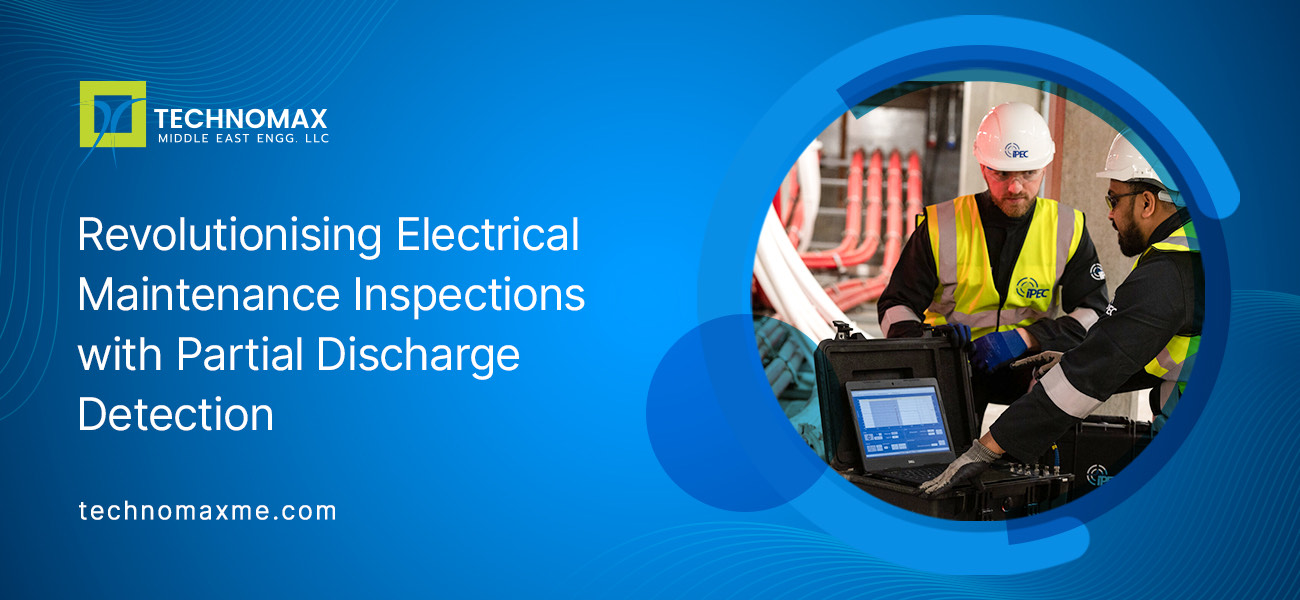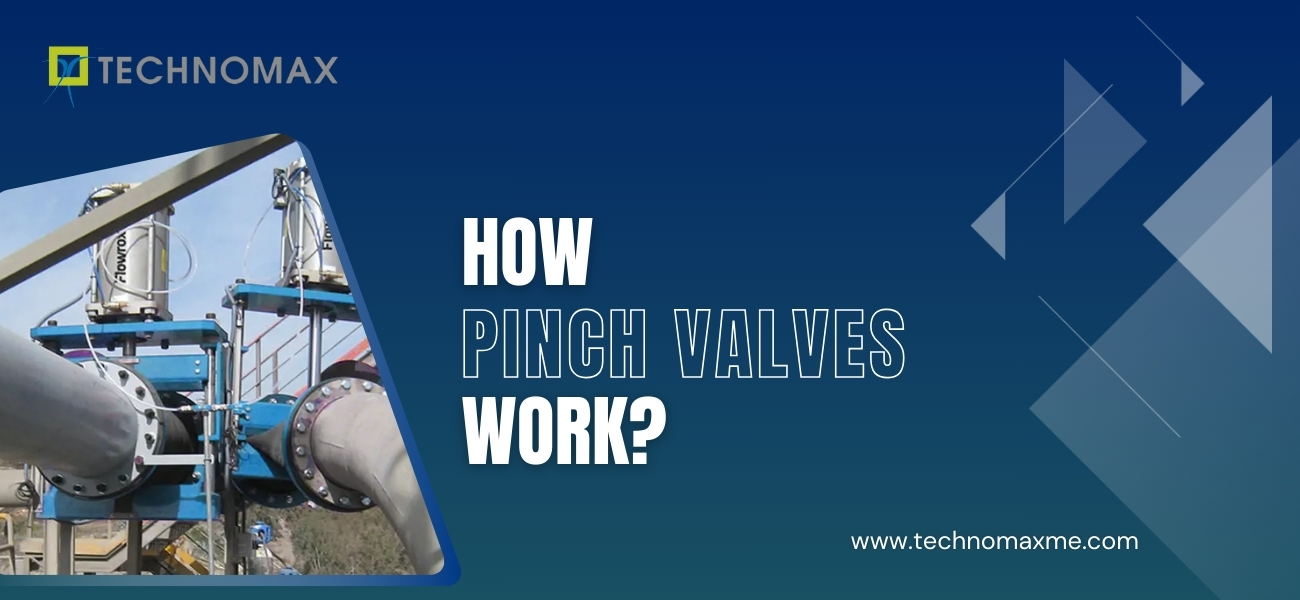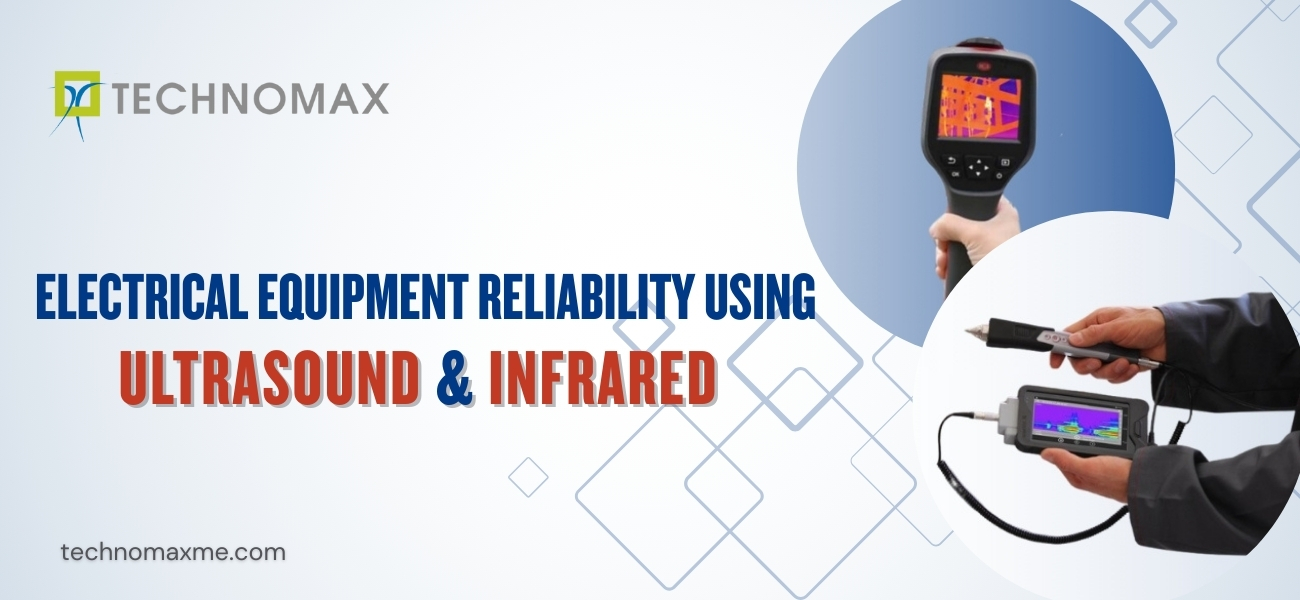
Revolutionising Electrical Maintenance Inspections With Partial Discharge Detection
Electrical maintenance with PD detection is one of the inevitable tests in the engineering industry. Electrical systems have revolutionised our lives these days, and we can see their influence in almost everything, such as powering our homes, businesses, transportation, and other industries. While they have alleviated our workload and contributed to efficiency, they also possess potential hazards. Just as we check our vehicles regularly to ensure safety and reliability, electrical systems also require inspection at regular intervals to understand the working conditions and identify even the slightest change. But how should these high-voltage systems be checked without risking safety? This is a question of concern.
Conventionally, electrical maintenance inspections were carried out manually by expert professionals. They had to get into active equipment to examine the system, and this approach, though indispensable, was time-consuming and often provided ambiguous results as some faults could go unnoticed. Not only can these, but direct exposure to these systems consorts potential hazards like arc flashes or electric shocks. This demanded better ways to inspect these electrical systems.
Partial Discharge (PD) detection was introduced to inspect electrical systems conveniently/effectively, as the safety of the electrical system should not be overlooked. PD detection made use of sensors to detect any potential issues early on and send real-time alerts within the network so that the professionals could identify the issues and rectify them right away. Read on to understand how Partial Discharge detection is revolutionising electrical maintenance inspections.
The Advent of Partial Discharge Detection
Partial Discharge occurs at different stages of an electrical system’s lifespan. This includes defects during manufacturing, assembly, installation, etc. Apart from these, PD can also occur due to physical damage from external factors or operational damage. The introduction of PD detectors has created a whole new, safer way of identifying and locating electrical faults in a network through sensors.
The sensors analyse PD (high-frequency emissions), capture them, and then transmit the data to a central point where the software algorithms study them in detail and can interpret even the slightest change in the electrical system. With the help of Technomax’s PD Detector, electrical maintenance inspectors can understand the potential impact of faults in advance and take preventive measures to ensure the safety and dependability of systems.
You may also read:
- Types of Misalignment in Machines
- Bearing Fault Condition Monitoring Techniques
- Demystifying Partial Discharge
Unveiling the Benefits of Partial Discharge Detection
Partial discharge testing plays an important role in understanding the health and work performance of an asset, enabling maintenance professionals to identify the target maintenance areas that demand attention. Let’s have a look at the major advantages of partial discharge detectors:
- Early Detection of Electrical Faults: PD detection, when compared with the conventional method, helps identify minor changes in the electrical switchgear at the earliest. This helps in implementing mitigation strategies to avert catastrophic failures, which lead to occupation hazards, downtime, and financial losses.
- Cost-Effectiveness: Inspection of electrical equipment using PD detectors helps save money in two ways. To begin with, by using PD detectors, more equipment can be inspected efficiently and precisely on time. Secondly, this assessment helps in addressing the issues promptly, which helps reduce the overall expenses associated with them.
- Enhanced Safety: PD detection helps electrical engineers and inspectors examine high-voltage electrical equipment without close contact. Unlike the conventional approach, this greatly reduces the risk of accidents and shocks.
- Precision and Efficiency: PD detection is done with the help of sensors and software, which offer a high degree of precision in detecting and locating dim-outs/outages/discharges or failures, eliminating ambiguity associated with the conventional approach, which enables maintenance personnel to effectively address the identified problems.
- Versatility and Broad Range of Applications: The application of PD detection comes in handy to diverse fields such as power-generation industries, Manufacturing, and Transportation & utilities industries etc. Furthermore, PD detection tools can be implemented on a wide range of electrical equipment, including motors, switchgear, cables, and transformers. All these make PD detection an indispensable part of electrical maintenance and asset longevity.
Innovative PD Detection Technologies
Recent technological advancements have led to the development of groundbreaking PD detection tools that not only save time but also claim unparalleled accuracy and efficiency. Acoustic imaging and high-frequency current transformers (HFCTs) are two prominent technologies that have emerged.
- Acoustic Imaging: In acoustic imaging, ultrasonic sound waves emitted by PD are used to generate real-time visual images. This pinpoints the location of a problem along with the severity of sources, which allows hassle-free detection of faults even though the electrical systems are complex.
- High-Frequency Current Transformers (HFCTs): HFCTs are non-intrusive devices that clamp around electrical cables. They measure the high-frequency current caused by PD, and this data can be used to identify and locate PD sources. This method is well suited for finding faults in high-voltage systems.
Managing Maintenance Schedules with Precision
PD detection data can be easily integrated into predictive maintenance programs, allowing optimisation of resource allocation and maintenance schedules. By identifying electrical faults in assets through innovative PD detection technologies, unplanned outages, downtime, and operational disruptions can be prevented, ensuring the smooth operation of electrical equipment.
Fast and Accurate Inspections
As said earlier, PD detection immensely reduced the tedious and laborious electrical maintenance inspection associated with the conventional approach. PD detection’s high accuracy and precision allow maintenance personnel to have a clear understanding of the operational reliability of machinery and focus on handling the faults identified. This also enables teams to concentrate on the areas that need attention rather than spending time on futile repairs or replacements.
How Technomax’s PD Detection Revolutionises Electrical Asset Management?
Technomax’s PD detection system/scheme provides several benefits, including:
- Reduced risk of electrical failures: Identifying any potential issues before they occur or at an early stage enables timely, corrective actions to minimise downtime and failures.
- Enhanced safety: PD testing offers better protection for workers, safeguarding them from shocks and arc flash incidents when compared to the typical method that demands direct contact with high-risk and high-voltage electrical equipment.
- Improved asset lifespan: Scheduling inspections at regular intervals and addressing any concerns right away eliminates associated risks. This in turn helps extend the lifespan of assets.
- Cost-effective maintenance: Unnecessary inspections and repairs can be time-consuming and costly. PD detection focuses on the areas that need maintenance and this can reduce the overall cost and downtime.
- Streamlined maintenance processes: Accurate detection of faults promptly streamlines maintenance activities and reduces downtime.
- Unparalleled accuracy: PD technology can identify even the slightest partial discharges. This provides a more comprehensive understanding of faults and locates the area accurately.
- Real-time monitoring: PD uses sensors and algorithms that are embedded in the existing electrical system. They continuously monitor the systems in the network and alert if any issues arise.
The impact of PD technology in the electrical engineering field is echoing across diverse industries. As technology advances, power plants, transportation systems, manufacturing facilities, and many other industries are adopting PD technology to protect their electrical equipment. Being the top engineering company in UAE, Technomax’s innovative PD technology is revolutionising the way electrical assets and systems are handled.
Embracing the Transformation in Electrical Maintenance
PD detection has changed the electrical engineering industry, and the effects can be observed through the progress from imprecise and inaccurate to innovative and predictive inspection of electrical equipment. By recognising electrical faults in the system in advance and alerting them in real time, cutting-edge PD detection prevents minor issues from intensifying into serious concerns. This also allows for extending asset life and reducing the need for unplanned maintenance.
Technomax’s PD detectors leverage pioneering technology to monitor all systems in the network. This helps electrical engineers and the maintenance inspection team plan and schedule maintenance based on the condition of assets. As the electrical industry continues to evolve, Technomax’s PD detection services will indeed play an even more crucial role in safeguarding the safety, security, reliability, and sustainability of electrical systems across the globe.
Learn More About Our Services


Get Started Now!
It takes less than a minute of your time. Or you may simply call +971 2 555 1 783






